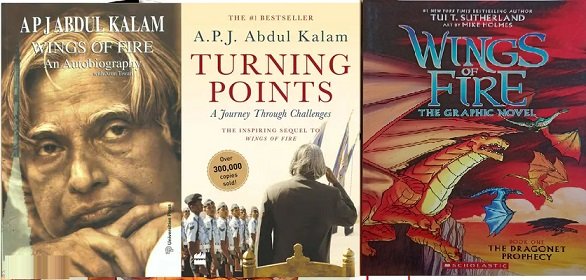Introduction
The “Wings of Fire” book is more than just a memoir. It is an inspirational saga of overcoming challenges, pursuing dreams, and achieving greatness. Authored by Dr. A.P.J. Abdul Kalam, the 11th President of India and a renowned scientist, this book chronicles his remarkable journey from humble beginnings to becoming one of the most respected figures in India. In this detailed guide, we will delve into the essence of the “Wings of Fire” book, its key themes, and its enduring impact on readers worldwide.
Overview of Wings of Fire
| Aspect | Details |
|---|---|
| Title | Wings of Fire |
| Author | Dr. A.P.J. Abdul Kalam with Arun Tiwari |
| Genre | Autobiography |
| First Published | 1999 |
| Publisher | Universities Press |
| Language | English |
| Number of Pages | 180 |
| Target Audience | Students, Professionals, Leaders |
About the Author: Dr. A.P.J. Abdul Kalam
Dr. A.P.J. Abdul Kalam, also known as the “Missile Man of India,” was a visionary leader, scientist, and educator. Born on October 15, 1931, in Rameswaram, Tamil Nadu, Dr. Kalam’s journey from a modest background to becoming a global icon is an inspiring tale. His significant contributions to India’s defense and space research programs, including the development of ballistic missile technology, earned him widespread recognition.
Dr. Kalam co-authored “Wings of Fire” with Arun Tiwari, a close associate and former colleague. Together, they wove a narrative that inspires generations to dream big and work tirelessly to achieve their goals.
Key Themes in Wings of Fire
- Perseverance and Hard Work: The book emphasizes the importance of relentless effort and dedication in the face of adversity. Dr. Kalam’s journey highlights how determination can transform even the most challenging circumstances.
- Leadership and Teamwork: Dr. Kalam’s achievements in projects like SLV-3 and Agni missiles underscore the significance of collaboration and visionary leadership.
- Education and Knowledge: Dr. Kalam’s passion for learning and his belief in the transformative power of education serve as recurring motifs throughout the book.
- Spirituality and Humility: Despite his monumental achievements, Dr. Kalam remained grounded and drew strength from his spiritual beliefs and simple lifestyle.
Summary of Wings of Fire
Part I: Orientation
This section provides an intimate glimpse into Dr. Kalam’s early years. It covers his upbringing in a small coastal town and the values instilled in him by his family. It also sheds light on the formative experiences that shaped his character.
Part II: Creation
In this segment, the narrative shifts to Dr. Kalam’s academic and professional journey. It chronicles his work with the Indian Space Research Organisation (ISRO) and the pivotal projects he spearheaded.
Part III: Propitiation
Here, readers learn about Dr. Kalam’s challenges, including project failures, and how he navigated them. This section showcases his resilience and problem-solving abilities.
Part IV: Contemplation
The concluding section reflects on Dr. Kalam’s vision for India’s future, his philosophy of life, and his enduring legacy as a mentor and leader.
Impact of Wings of Fire
“Wings of Fire” has had a profound impact on readers worldwide. The book:
- Inspires Young Minds: It motivates students and young professionals to dream big and pursue their aspirations despite obstacles.
- Encourages Leadership: Dr. Kalam’s life demonstrates the importance of ethical leadership and the ability to inspire others.
- Promotes National Pride: The book underscores the importance of self-reliance and innovation in national development.
Notable Quotes from Wings of Fire
- “Dream, dream, dream. Dreams transform into thoughts, and thoughts result in action.”
- “We are all born with a divine fire in us. Our efforts should be to give wings to this fire and fill the world with the glow of its goodness.”
- “Climbing to the top demands strength, whether it is to the top of Mount Everest or to the top of your career.”
Frequently Asked Questions (FAQs)
Q1. Who should read Wings of Fire? Anyone seeking inspiration, particularly students, professionals, and aspiring leaders, will benefit greatly from this book.
Q2. What is the central message of Wings of Fire? The book emphasizes the power of dreams, hard work, and perseverance in achieving success.
Q3. How is Wings of Fire relevant today? Its lessons on resilience, innovation, and ethical leadership remain timeless and universally applicable.
Comparison of Key Projects Mentioned in the Book
| Project | Organization | Achievements |
| SLV-3 | ISRO | India’s first satellite launch vehicle |
| Agni Missile | DRDO | Strengthened India’s defense systems |
| Pokhran-II Nuclear Test | DRDO/DAE | Established India as a nuclear power |
Conclusion
“Wings of Fire” is not just a book. It is a beacon of hope, resilience, and determination. Dr. Kalam’s journey serves as a testament to what can be achieved through unwavering faith, hard work, and a commitment to excellence. For anyone looking to ignite their own inner fire and soar to new heights, this book is a must-read.
Disclaimer
This article is intended for informational purposes only. While every effort has been made to ensure the accuracy of the content, readers are advised to refer to the original “Wings of Fire” book for detailed insights. The author of this article does not claim any copyright over the content of the book.
